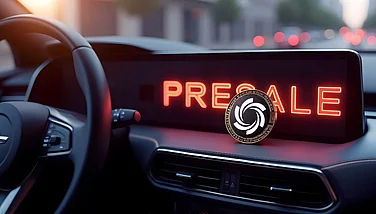The virtual world of assets is evolving at a breathtaking pace, and two concepts—NFTs (Non-Fungible Tokens) and tokenization—are leading the charge. NFTs enable unique digital items to be bought, sold, and owned securely on the blockchain, while tokenization enables assets, whether physical or digital, to be sliced into smaller units to be owned by multiple people, a phenomenon known as fractional ownership. Together, these technologies are revolutionizing investment choices, collectibles, real estate, art, and so on.
In this article, we will explain how NFTs work, how tokenization allows for fractional ownership, pros and cons of such technologies, and how they can revolutionize the life of a common investor. Once you read this article, you will have a clear idea of how these digital technologies are revolutionizing the people's ownership and investment in the new era.
Understanding NFTs: The Digital Asset Revolution
What Are NFTs?
NFTs, or Non-Fungible Tokens, are blockchain-based digital ownership certificates for unique assets. While cryptocurrencies like Bitcoin and Ethereum are fungible and can be exchanged, NFTs are distinct and cannot be replaced with another token.
NFTs can be applied to depict digital art, music, video, virtual assets within a game, virtual real estate, and even tangible items like property or collectibles. Their uniqueness, verifiability, and trackability make them highly valuable today.
How NFTs Work
NFTs exist on blockchain networks, most notably Ethereum, but other blockchains like Solana and Tezos are gaining popularity. All NFTs have metadata that includes details of the asset, its ownership history, and proof of ownership. Transactions are governed by smart contracts—a set of programmed rules—by which transactions are governed to ensure transparency and security.
Tokenization Explained
What Is Tokenization?
Tokenization is the process of converting an asset into a digital token on the blockchain. It may be a financial asset like bonds or stocks, a real asset like real estate or art, or even intangible assets like intellectual property.
Tokenization makes it possible for the assets to be divided into smaller units, thereby making them accessible to more people across the globe for investment. Fractional ownership is on this premise.
Fractional ownership allows multiple investors to co-own an expensive asset without having to purchase it in full. For instance, a piece of digital art that costs $100,000 can be broken into 1,000 NFTs, each of which will have a 0.1% stake in the artwork. Owners can trade, sell, or benefit from an appreciation in the asset proportionately.
This makes investing accessible to individuals who were unable to invest in previously high-net-worth individual-only markets.
Benefits of NFTs and Fractional Ownership
Increased Accessibility
Tokenization makes markets like art, collectibles, and real estate accessible to mainstream investors by dividing high-value assets into fractional ownership.
Liquidity
The assets that have been fractionalized may be resold on secondary markets, making the markets otherwise illiquid.
Blockchain technology ensures that ownership, transfer, and history of the transaction are transparent and cannot be changed, reducing the risk of fraud.
Portfolio Diversification
Strategic investors diversify by owning small chunks of numerous assets, spreading risk and potential reward.
Practical Applications for NFT Tokenization
Art and Collectibles
Fine art is tokenized so multiple collectors can own it. Iconic pieces of art or digital collectibles can now enjoy fractional profits with multiple individuals.
Real Estate
Properties may be tokenized, enabling fractional ownership. Investors may own slices of commercial or residential real estate without having to contend with the hassle of property management.
Music and Entertainment
Musicians and artists may tokenized their works, selling part-wholes to fans who get returns on investment proportionally. This creates new sources of income and opportunities for fan engagement.
Virtual Worlds and Gaming
NFTs on metaverse platforms and games can be fractionalized, enabling investors or groups of players to share in the ownership of in-game content, virtual property, or premium content.
Challenges and Risks
Regulatory Uncertainty
The legal framework governing NFTs and fractional ownership is still developing. Investors must navigate complex securities, taxation, and intellectual property law.
Market Volatility
NFTs and tokenized assets are very speculative, and their value fluctuates dramatically with demand and market trends.
Technical Risks
Technical glitches in smart contracts, hacking, or blockchain failure can jeopardize assets, making it essential to have secure platforms and sound technology.
Valuation Issues
Pricing one-of-a-kind or fractional assets can be tricky since there is no normal market or history of most tokenized assets.
Expanding Horizons: The Next Wave of NFTs and Tokenization
As NFTs and tokenization gain momentum, their potential extends far beyond art and collectibles. These technologies are not merely financial tools; they are catalysts for reshaping ownership models, redefining how individuals and institutions perceive value, and opening new avenues for innovation. In this section, we’ll explore emerging applications, broader market implications, and strategies for maximizing opportunities in this digital ecosystem.
NFTs and Tokenization of Traditional Finance
Though NFTs are frequently associated with digital art, their application in traditional finance is picking up pace. Traditional financial assets like stocks, bonds, and commodities are increasingly getting tokenized. Tokenized stocks allow investors to purchase fractions of stock without the involvement of middlemen like brokers. Tokenized bonds also facilitate access to fixed-income assets that were earlier only accessible to institutional investors.
This change has significant implications for global markets. Fractional ownership reduces entry barriers, enabling retail investors to reach high-value markets and providing market liquidity. Tokenization for institutions simplifies settlement, reporting, and compliance procedures and ultimately reduces costs and inefficiencies related to operations.
Unlocking the Real Estate Market
Perhaps one of the most fascinating applications of tokenization is in real estate. In the past, purchasing commercial or luxury residential property required vast sums of capital and comprehension of Byzantine legal arrangements. Tokenization simplifies matters by allowing the breaking down of properties into digital tokens that each represent a portion of ownership.
Let's consider an example of a luxury apartment in a large city that is valued at $2 million. It can be divided into 2,000 tokens valued at $1,000 each through tokenization. Investors from all over the globe can now buy, sell, or trade these tokens, participating in real estate investing that was previously out of reach. Tokenization is also more transparent: everything that makes up the ownership records and transactions is written on the blockchain, minimizing disputes and fraud.
Moreover, tokenized property can facilitate new economic models. Developers can raise capital through the issue of tokens that will represent future cash flows, while investors get proportionate returns from rents or appreciation in asset value. This establishes a more inclusive platform for creators and investors alike.
Revolutionizing the Music and Entertainment Industry
Tokenization is being employed by artists, content creators, and filmmakers to generate new revenue streams. Artists have historically depended on distributors, streaming services, or record labels for royalties, typically receiving impenetrable royalty frameworks. NFTs enable artists to tokenized their works, granting fractional ownership to fans who receive royalties whenever the work makes money.
This design makes possible the direct interaction between artists and audiences. The fans are stakeholders, incentivized to share and participate in the artist's success. For instance, an album can be cut into 10,000 NFTs, and each one will have a percentage of ownership in revenue. If the album makes money from streaming or licensing, the owners of NFTs get their share money automatically through smart contracts.
Furthermore, tokenization improves the experience of the fans as well. NFTs reserved for a select few may provide the privilege of early access to shows, behind-the-scenes visits, or specially created merchandise, combining investment and participation. Tokenization is hence revolutionizing monetization, fan activation, and cultural value of the content.
Gaming and Virtual Worlds
The gaming sector is another sector where NFTs and fractional ownership come into play. In the conventional form of gaming, customers buy in-game possessions, virtual skins, or real estate, which cannot be resold or profitable. NFTs reverse this by establishing digital assets with provable ownership, which can be sold on second markets.
Fractional ownership opens up possibilities to even higher degrees. A unique in-game item or virtual property on a metaverse platform can be held by numerous players, with each player having the right to enjoy or enjoy sole use of the asset. The model allows for cooperation, community investment, and digital economies within game worlds.
Moreover, blockchain gaming platforms allow users to transform digital properties into real-world earnings. NFT gaming asset marketplaces are growing exponentially, causing gamers to monetize their assets and skills in ways previously not feasible. This has given rise to play-to-earn economies, where gaming is not merely entertainment but also a viable source of earnings.
Art, Collectibles, and Cultural Preservation
Art never was a high-demand market with restricted access. Tokenization and NFTs allow everyone to own iconic art pieces, unique collectibles, or even ancient relics. Fractional ownership makes it accessible to the masses, and blockchain guarantees provenance and authenticity.
Apart from economic benefits, tokenization can help conserve culture. Museums, cultural centers, and art galleries can tokenize unique artifacts such that the world can engage with conserving and appreciating cultural heritage. Investors reap economic benefits, while the masses get digital access to historical relics.
Risks and Considerations: Navigating a Nascent Market
Even with the potential, NFTs and tokenization pose risk. Investors have to walk through risks of all types:
Regulatory Framework: Global regulation of digital assets is still incomplete. Securities, taxation, intellectual property, and anti-money laundering legislations are different across jurisdictions, which creates confusion for investors and creators.
Market Speculation: NFT and tokenized asset markets can be volatile. Prices can be driven up by hype or social media, resulting in speculative bubbles. One must know about market behavior and practice due diligence.
Technology and Security: Smart contracts, blockchain platforms, and marketplaces can have bugs, get hacked, or even experience technology failures. Investors need to be vigilant regarding safe platforms and technical fidelity of assets.
Difficulty in Valuation: It is difficult to place a value on fractional or specialty digital assets. Unlike commodities or stocks, there often is no standard market information or past precedent. Third-party research and professional valuations become essential.
How to Begin with NFTs and Fractional Ownership
Investigate Platforms: Investigate NFT marketplaces and tokenization platforms for fractional ownership.
Gain an Understanding of the Asset: Appraise the underlying asset and the potential for value appreciation
Evaluate Risk: Evaluate volatility, market trend, and technical risk before investment.
Start Small: Start off in small fractions to get used to the process.
Keep Up to Date: Keep up with blockchain, NFT, and tokenization advancements to inform choices.
The Future of NFTs and Fractional Ownership
The use of NFTs and fractional ownership will expand across sectors. Blockchain technology, regulatory certainty, and mass awareness will also render these digital assets cheap and high-confidence. In the near future, investors are able to observe fractional ownership being used across other industries ranging from luxury products and patents to foreign real estate. The convergence of traditional finance and digital assets is disrupting ownership, investing, and wealth generation across the globe.
Conclusion
NFTs and tokenization are revolutionizing our understanding of ownership, investment, and digital assets. By allowing fractional ownership, these technologies open up high-value assets to democratise access, increase liquidity, and build transparent and secure marketplaces.
Though risks are present, clever investors and tech enthusiasts who grasp the technology, market forces, and regulatory environment can garner enormous gains. The emergence of NFTs and tokenization holds out the promise for a transition toward a more inclusive digital economy of ownership that is agile, democratized, and innovative.
FAQs on NFTs and Tokenization
Q1: What is an NFT?
A1: A Non-Fungible Token (NFT) is an exclusive digital token that serves as evidence of ownership of a particular asset, most usually digital art, collectibles, or virtual goods.
Q2: What is fractional ownership?
A2: Fractional ownership enables several people to own fractions of a valuable asset in the form of tokenization, with smaller investment and proportional returns being facilitated.
Q3: Can I sell my share of a tokenized asset?
A3: Tokenized fractions of assets are usually liquid in secondary markets, offering liquidity.
Q4: Is fractional ownership and NFT risky?
A4: Yes, they are risky, e.g., market volatility risk, tech problems, and regulatory risks. Investors must conduct adequate research before engaging.
Q5: How do I invest in tokenized assets?
A5: Begin by learning about platforms that support NFTs and fractional ownership, learning about the asset and risk, investing in small fractions to start, and keeping yourself informed of trends in the market.





















